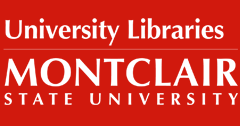Document Type
Article
Publication Date
3-31-2015
Journal / Book Title
BMC Ecology and Evolution
Abstract
Background: The host range of a pathogenic bacterial strain likely influences its effective population size, which in turn affects the efficacy of selection. Transmission between competent hosts may occur more frequently for host generalists than for specialists. This could allow higher bacterial population densities to persist within an ecological community and increase the efficacy of selection in these populations. Conversely, specialist strains may be better adapted to their hosts and consequently achieve greater within-host population densities, with corresponding increases in selection efficacy. To assess these different hypotheses, we examined the effective population sizes of three strains of the bacterium Anaplasma phagocytophilum and categorized the varying roles of selection and demography on patterns of genetic diversity and divergence in these populations. A. phagocytophilum is a tick-transmitted, obligately intracellular pathogen. Strains of A. phagocytophilum display varying degrees of host specialization, making this a good species for exploring questions regarding host range, effective population size and selection efficacy. Results: We found that a roe deer specialist harbored the most genetic diversity of the three A. phagocytophilum strains and correspondingly had the largest effective population size. Another strain that is ecologically specialized on rodents and insectivores had the smallest effective population size. However, these mammalian hosts are distantly related evolutionarily. The third strain, a host generalist, was intermediate in its effective population size between the other two strains. Evolutionary constraint on non-synonymous sites was pervasive in all three strains, although some slightly deleterious mutations may also be segregating in these populations. We additionally found evidence of genome-wide selective sweeps in the generalist strain, whereas signals of repeated bottlenecks were detected in the strain with the smallest effective population size. Conclusions: A. phagocytophilum is a diverse bacterial species that differs among distinct strains in its effective population size, as well as how genetic diversity and divergence have been influenced by selection and demographic changes. In this species, host specialization may facilitate increased population growth and allow more opportunities for selection to act. These results provide insights into how host range has influenced evolutionary patterns of strain divergence in an emerging zoonotic bacterium.
DOI
10.1186/s12862-015-0335-z
Montclair State University Digital Commons Citation
Aardema, Matthew and Von Loewenich, Friederike D., "Varying Influences of Selection and Demography in Host-Adapted Populations of the Tick-Transmitted Bacterium, Anaplasma Phagocytophilum Speciation and Evolutionary Genetics" (2015). Department of Biology Faculty Scholarship and Creative Works. 71.
https://digitalcommons.montclair.edu/biology-facpubs/71
Published Citation
Aardema, M.L., von Loewenich, F.D. Varying influences of selection and demography in host-adapted populations of the tick-transmitted bacterium, Anaplasma phagocytophilum . BMC Evol Biol 15, 58 (2015). https://doi.org/10.1186/s12862-015-0335-z


Comments
This is an Open Access article distributed under the terms of the Creative Commons Attribution License (http://creativecommons.org/licenses/by/4.0), which permits unrestricted use, distribution, and reproduction in any medium, provided the original work is properly credited.